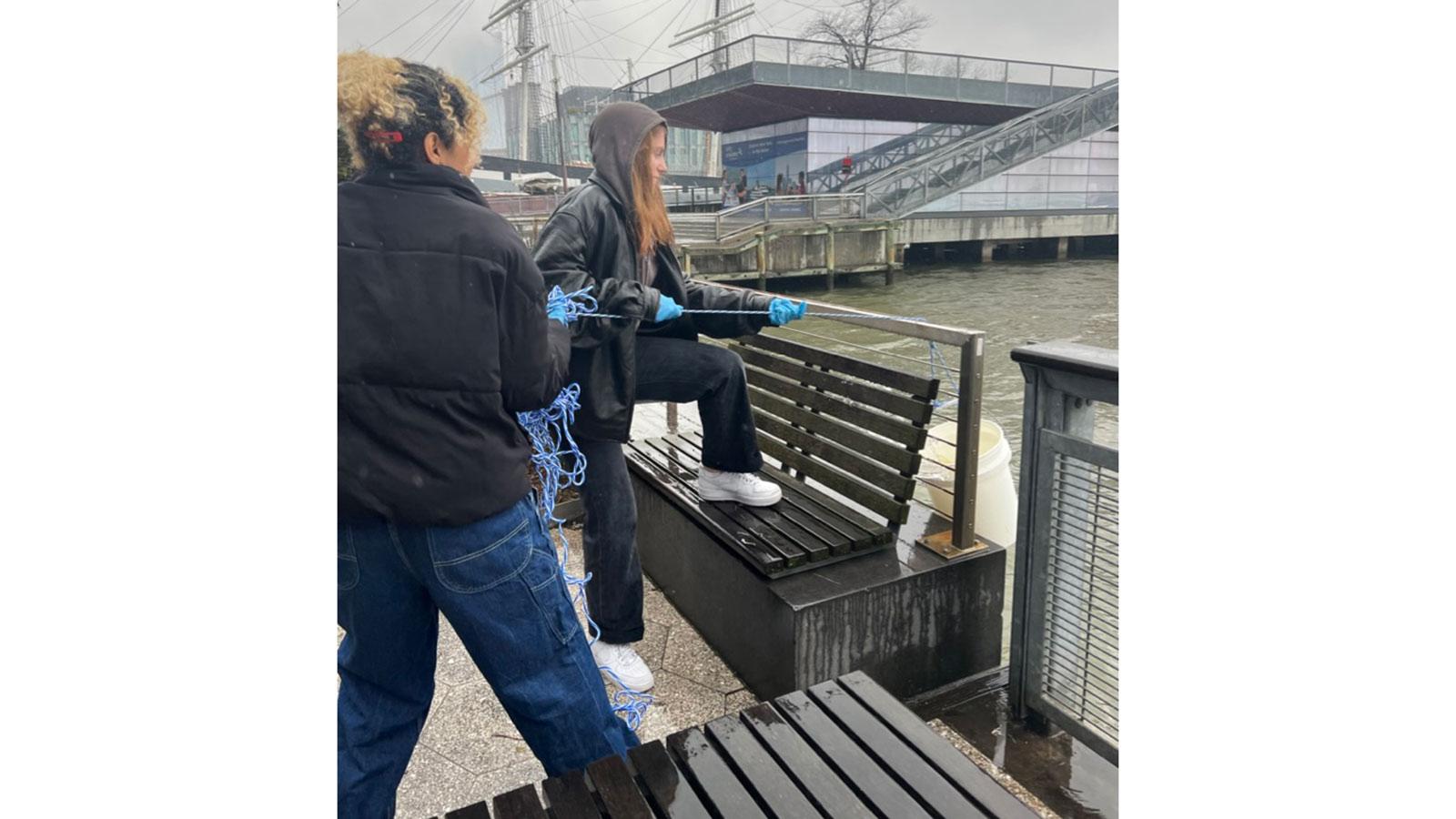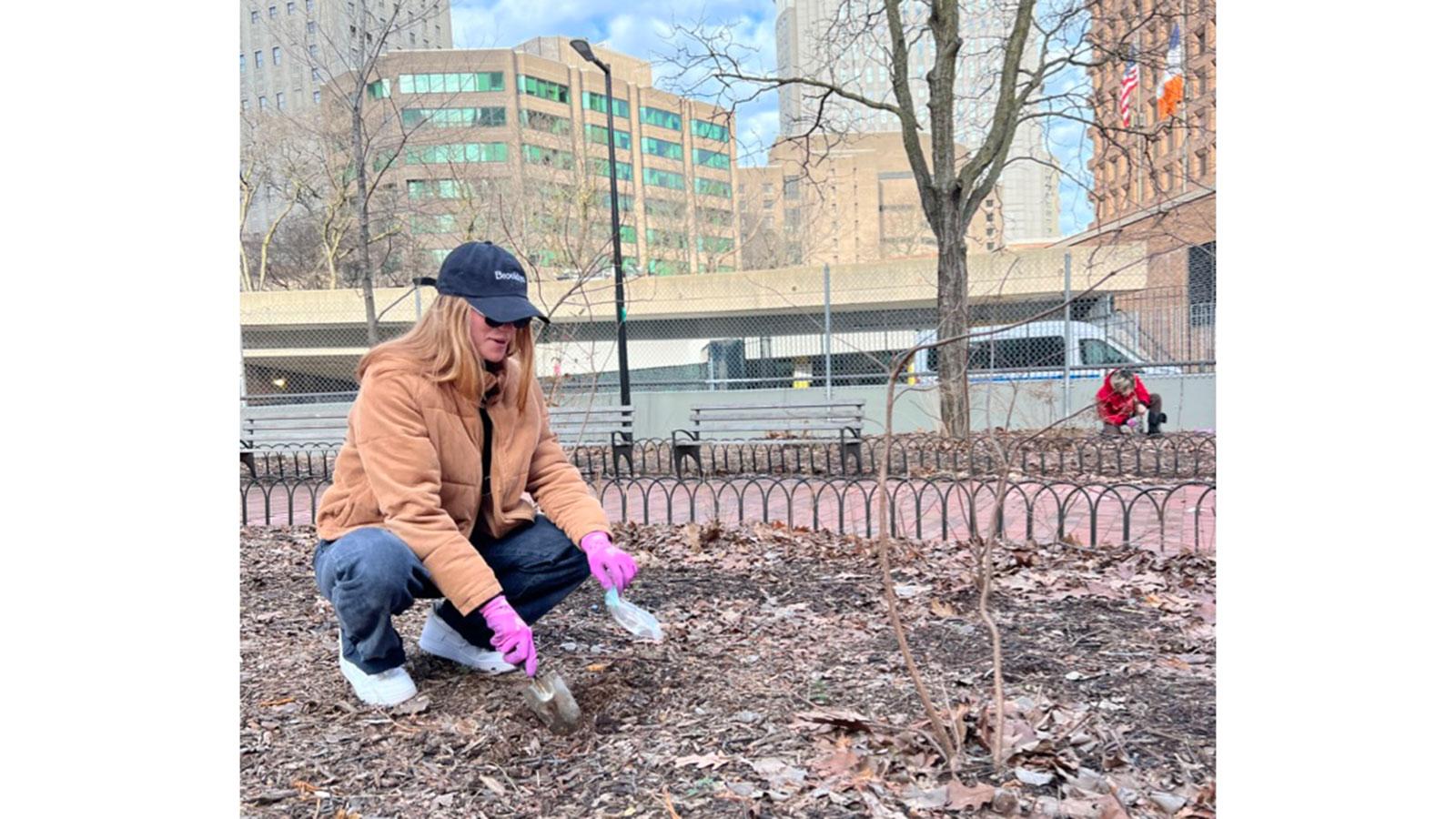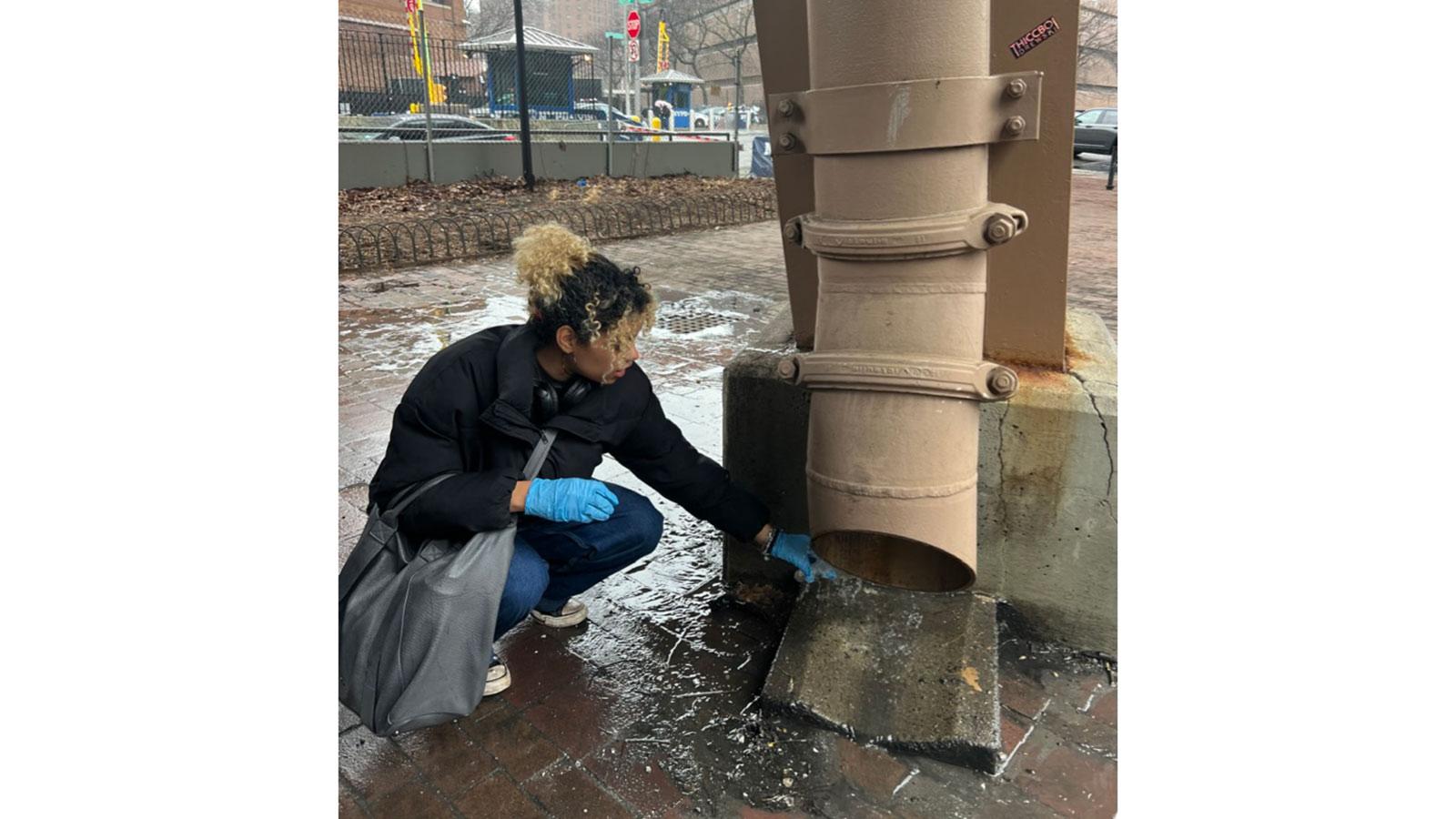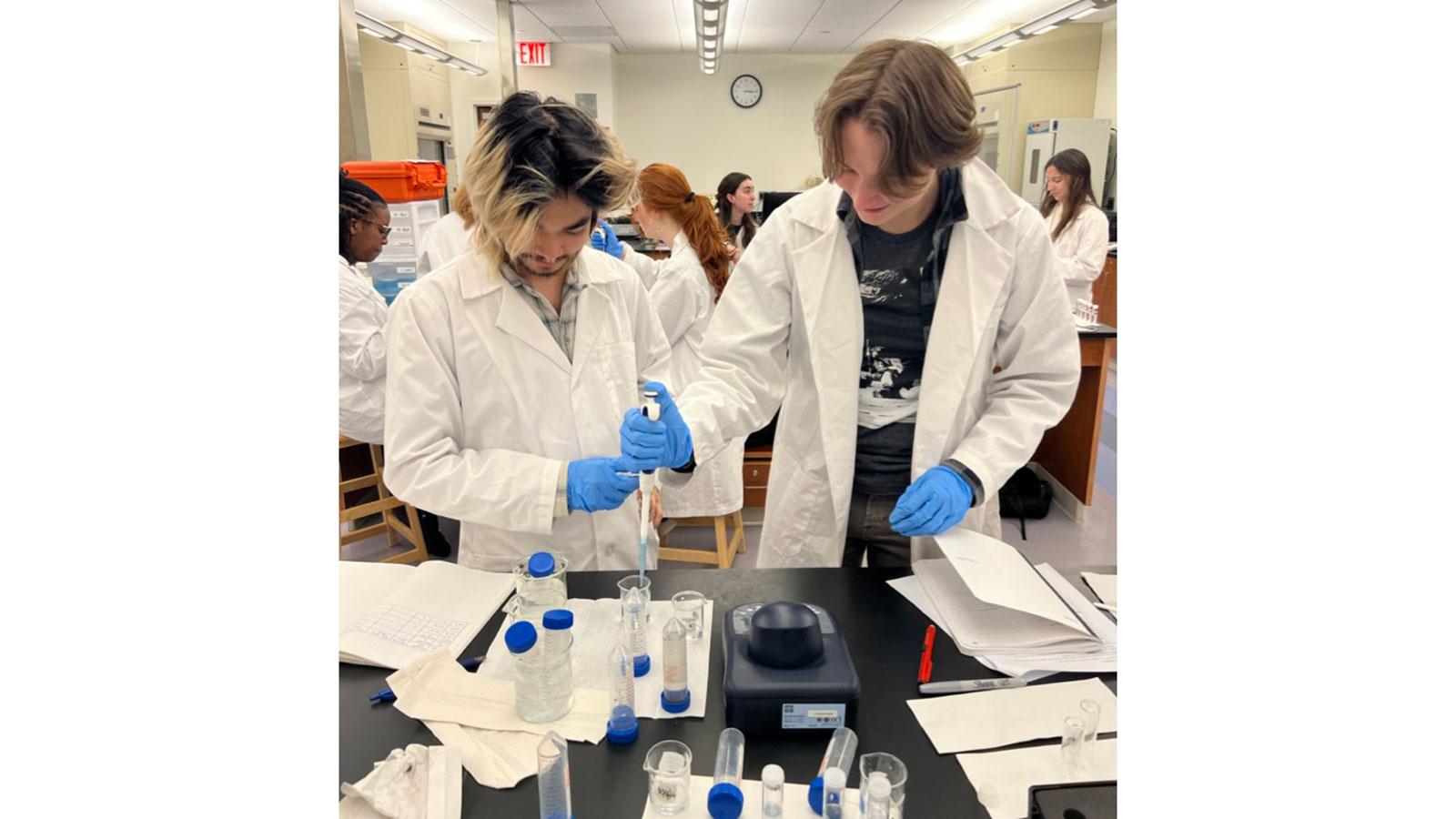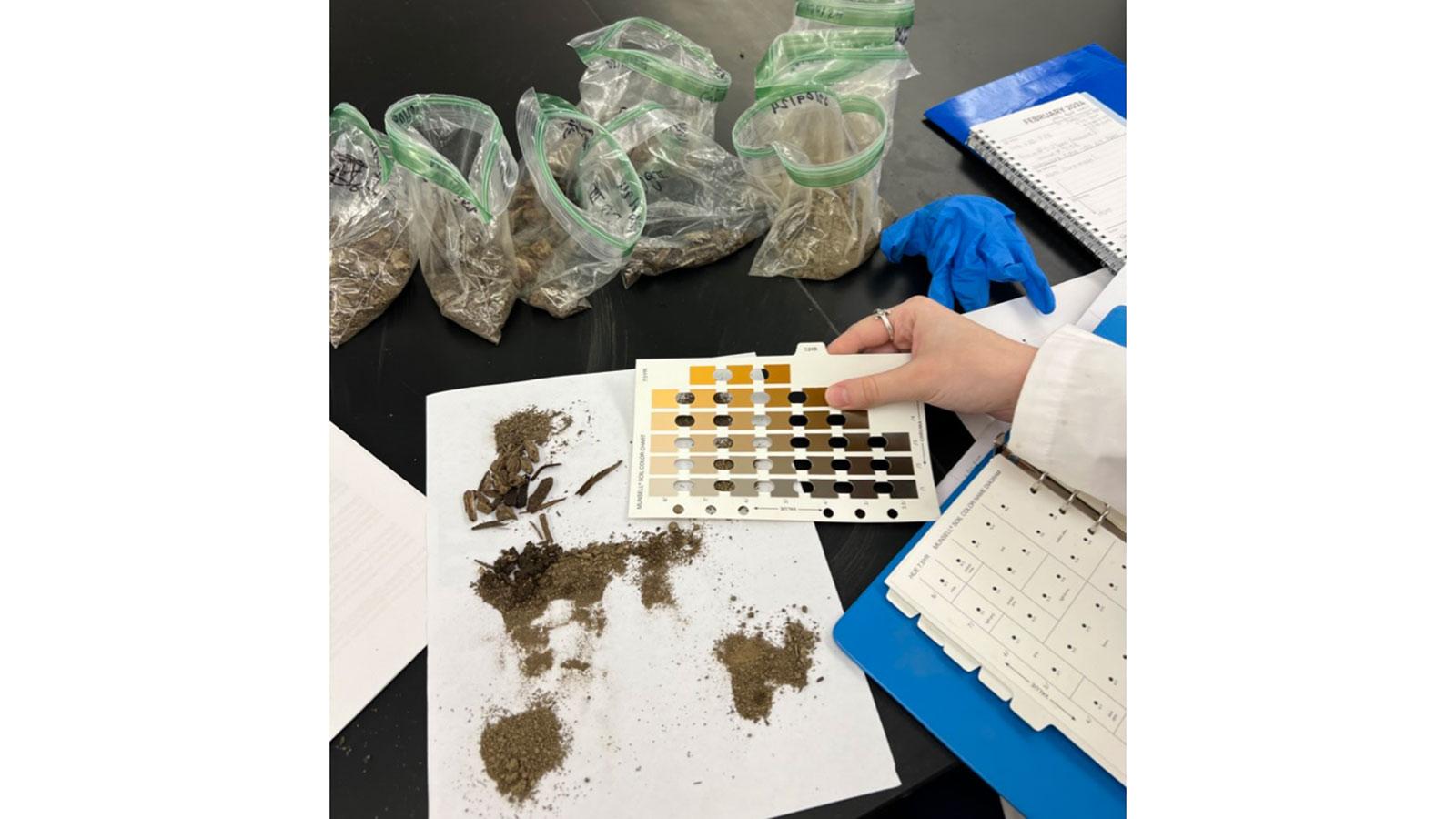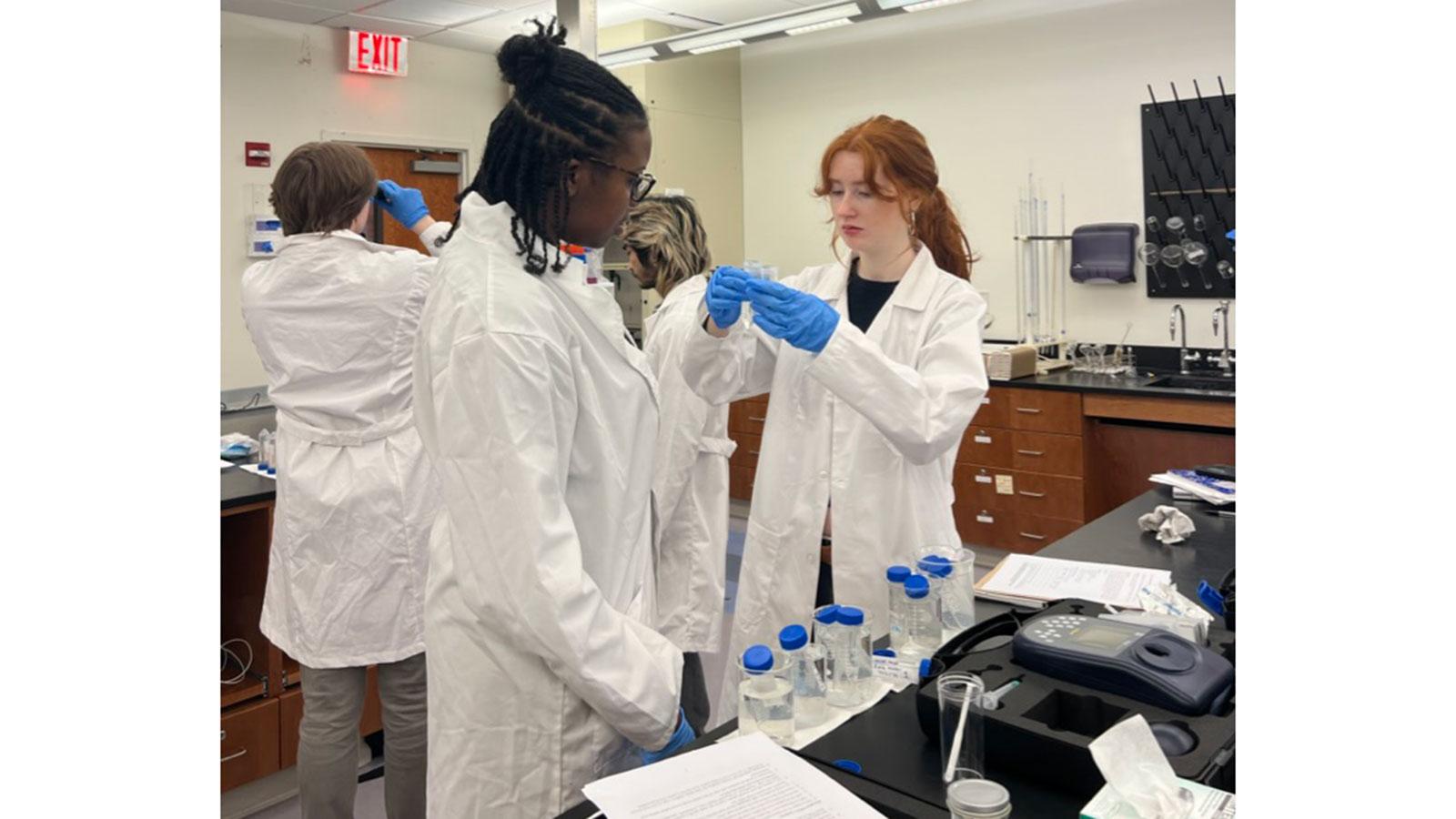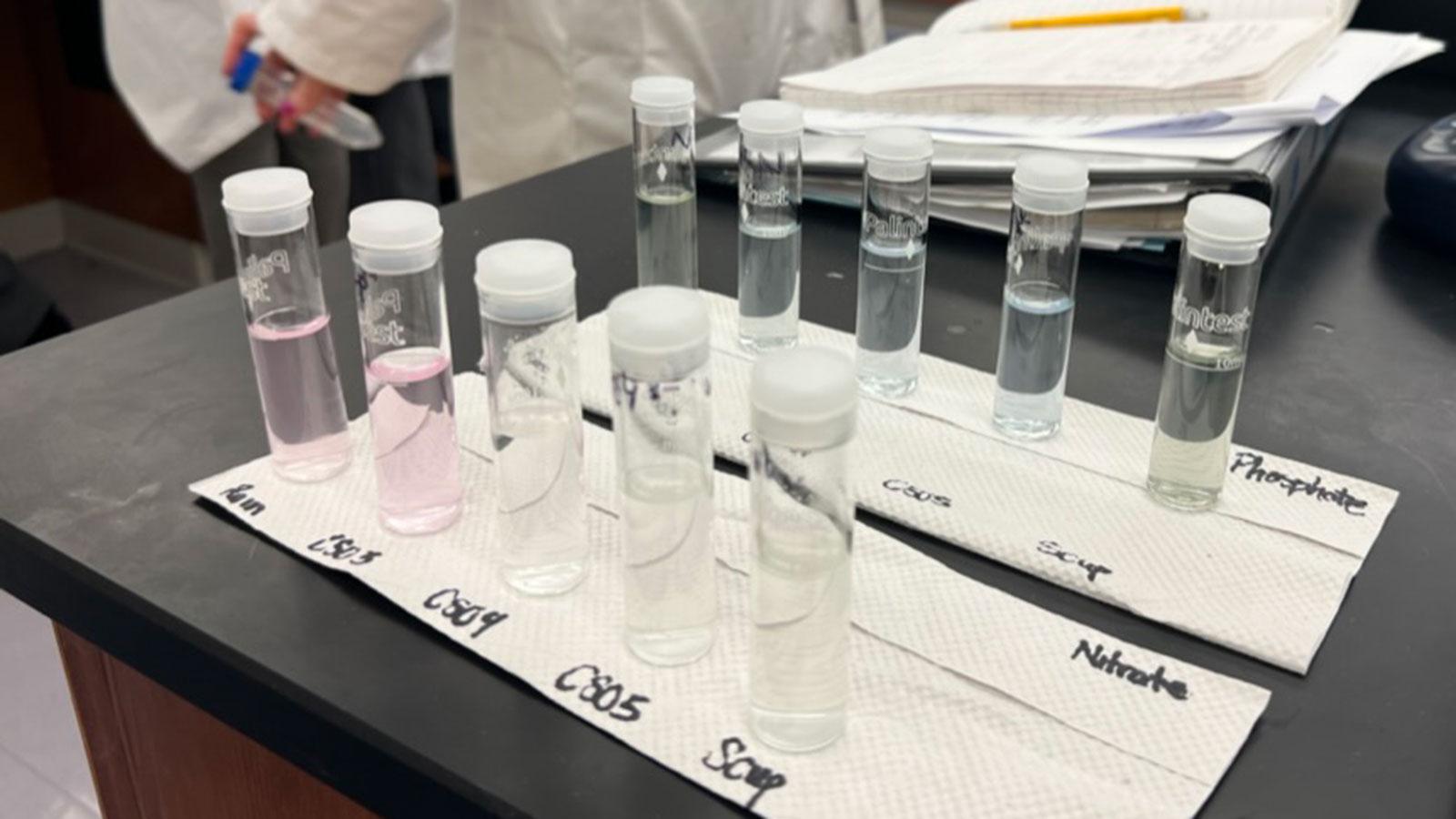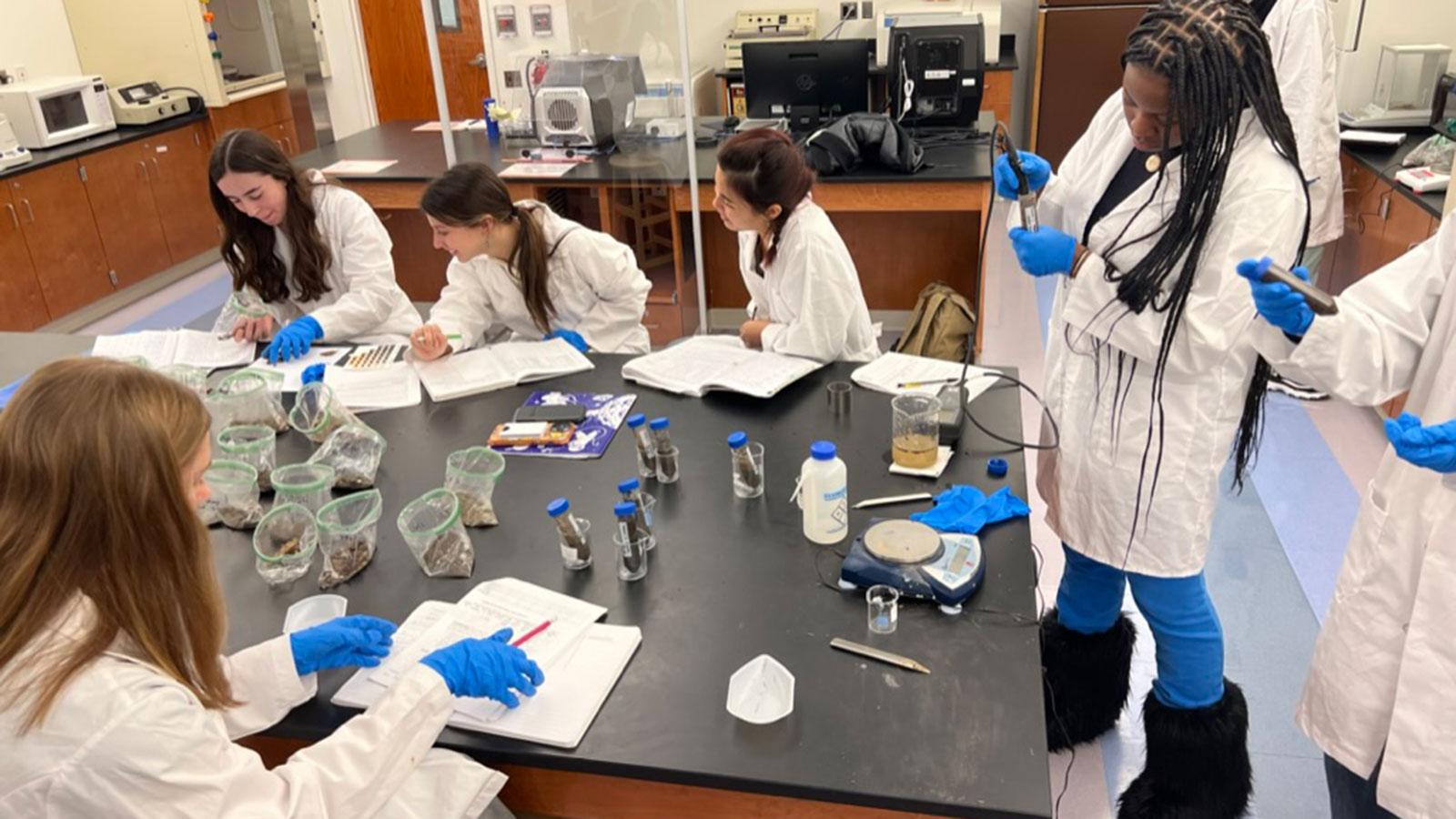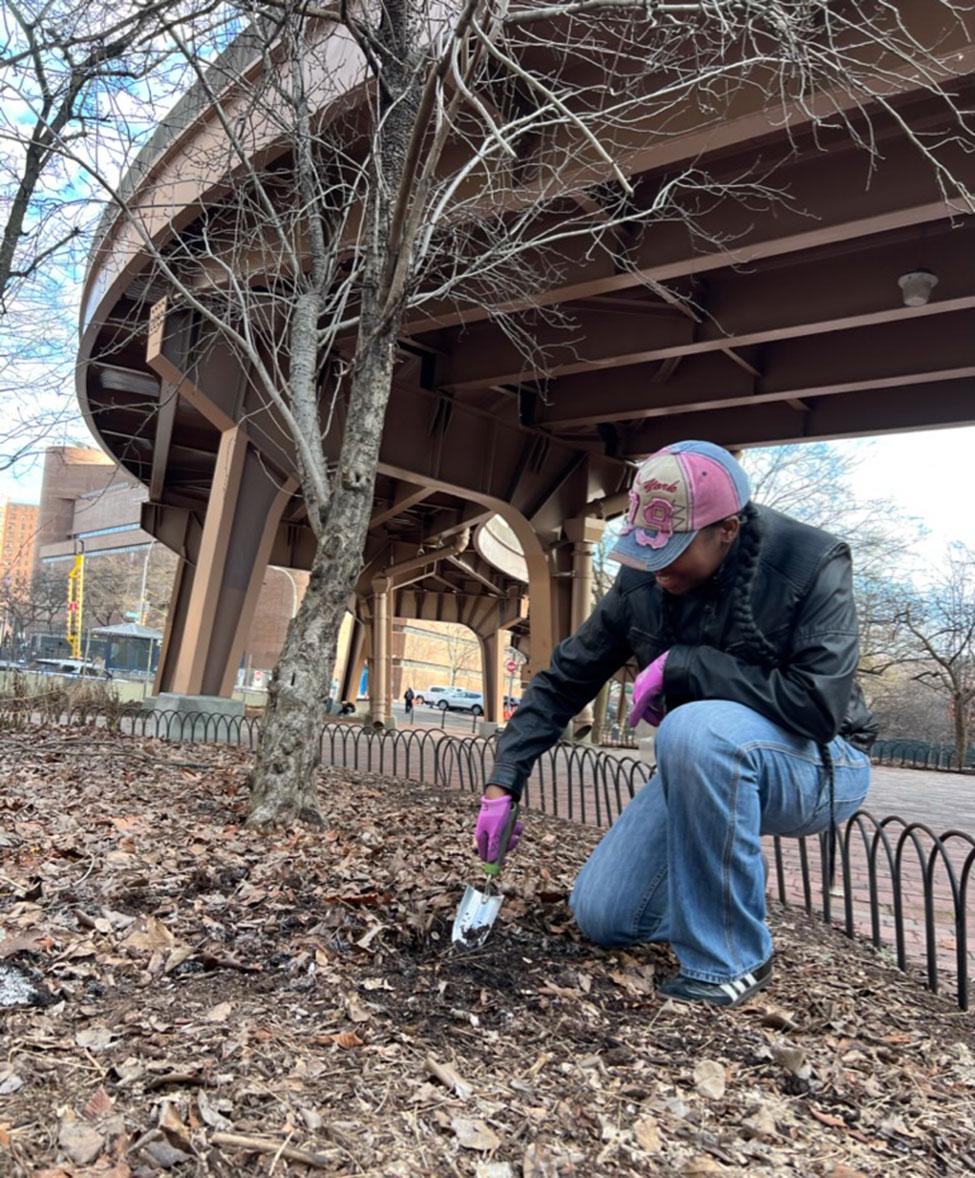
Pace Students and Faculty Collaborate to Deliver Environmental Analysis

Imagine being concerned that the community park you love may be an unhealthy environment with contaminated soil, air, or water that could make you or someone in your family ill. That is a concern for many in lower Manhattan, and it is one that Pace faculty and students have worked toward alleviating by providing testing and analysis, and offering solutions to help park officials ensure their park is a healthy place for everyone to enjoy.
It is our very own Environmental Studies and Science (ESS) Department that has addressed one such park in Pace University’s backyard in lower Manhattan.
With this issue top of mind, Assistant Professor S. Perl Egendorf, PhD, went into action. Her Fundamentals of Environmental Science II course entailed collaboration with the nonprofit organization Gotham Park in New York City to provide data the organization would use to inform their activities and offerings to the public in the namesake park nestled below the Brooklyn Bridge. (Gotham Park is a new park that seeks to unlock the potential of “the forgotten spaces under the Manhattan side of the iconic Brooklyn Bridge”).
Experiential learning with real impact
The course’s lab component included sampling and analyzing Gotham Park’s soil, air, and water to measure the overall health of the park and to help officials ensure the area remains a safe space for community members. The collaboration gave Pace students real-world opportunities to collect field samples, conduct lab analyses, analyze data, write a scientific report, and report back to stakeholders of Gotham Park.
One of many examples of hands-on, experiential learning at Pace, students worked hard to engage with chemistry concepts in lecture and activity sessions, and then developed real-world skills in the field and lab settings. “They met with local stakeholders at the beginning of the course and then shared the data they had collected and analyzed all semester with these stakeholders at the end. This was not only valuable for the students but also for the park and their continued operations,” said Egendorf.
Collection and Analysis of Samples
Brooklyn Stabb ‘26, Environmental Studies, was one of those students. “Applying not only our knowledge, but our learning objectives to a local community was an excellent experience. Using what we discovered left me, and I'm sure most of my classmates, with the most fulfilling feeling about schoolwork. We learned a great amount by having access to our local community and felt like we contributed to it as well, which was a great honor,” she said.
At the end of the semester, students presented their research methods and results, and provided guidance for future testing to Gotham Park administration, staff, and collaborators. They also made recommendations for flora to be planted at the park based on their findings.
Creating a safer haven for communities
“Gotham Park used to be a construction site for many years and is located under the Brooklyn Bridge where heavy traffic flows and children and community members socialize. Based on our analysis, we learned that contamination levels were mostly well below the Federal limits. There were few causes for concern, but with the testing results to inform them, they can be amended. Gotham Park can safely allow the public to utilize the space without concern of contamination levels or poor air quality,” said Abigail Leach, ’26, Environmental Studies.
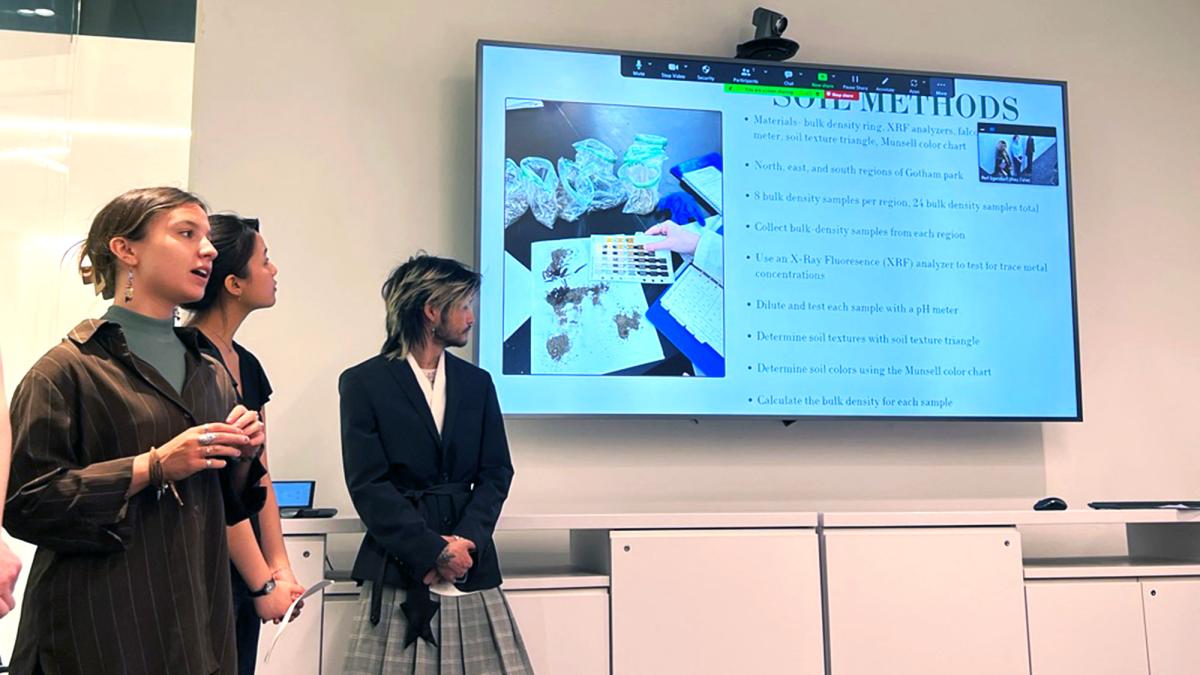
Gotham Park officials were pleased to learn that the soil, air, and water quality testing showed that the park is safe for regular interaction and have asked the student researchers to give their presentation again to a wider audience in fall 2024.
ESS + Opportunitas
Environmental Studies and Science Department faculty are focused on providing learning opportunities for Pace University students while supporting environmental conservation in our local New York City and Westchester County communities.
Students work closely with faculty to design these collaborative research projects and gain practical experience by applying what they have learned in the classroom to provide valuable research and support to organizations that are often underfunded, all while creating strong bonds and networks within their local communities.
